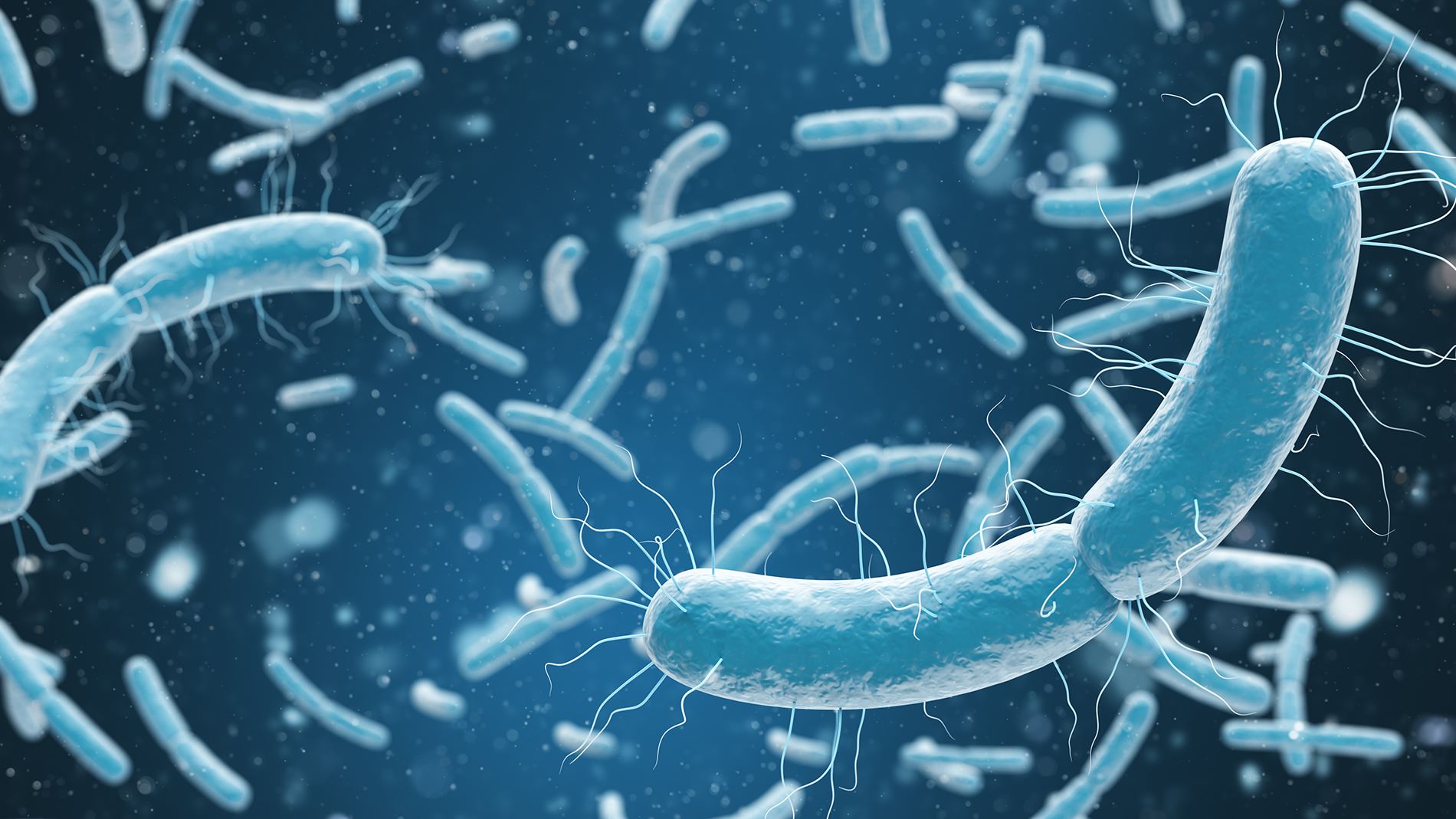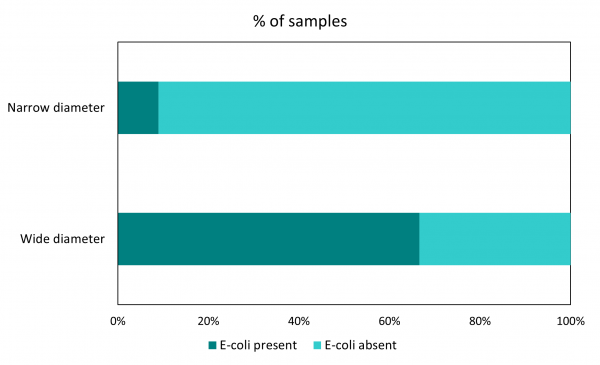Why we monitor micro-organisms in groundwater
The occurrence of micro-organisms in groundwater is a top priority concern from a health perspective, as their presence can lead to rapid and major outbreaks of illness, sometimes with fatal consequences.
Escherichia coli (E.coli) are the preferred indicator group for the occurrence of micro-organisms in groundwater because they are easy to detect and count, and have better survival in fresh water than enterococci. They are used as criteria in Ministry of Health drinking water guidelines. Specific measurement of viral occurrence, such as MS2, is by comparison expensive and difficult. Total coliforms were not included as they indicate more general bacterial occurrence, often unrelated to human health risk.
What's happening?
In the Waikato region, groundwater is widely used for potable supply - particularly in rural areas. About 25 per cent of the Waikato population still relies on septic tanks, which are a common source of groundwater contamination by faecal matter. Other potential sources of microbial contamination include offal holes and animal wastes, particularly where there is access via poorly constructed wells.
Localised microbial contamination of groundwater has been reported in some coastal areas where small communities rely on septic tanks for sewage disposal. On the Coromandel Peninsula, monitoring at Cooks Beach in 1990 showed about 40 per cent of groundwater samples collected from 17 wells contained faecal bacteria. In 1997, monitoring showed about 10 per cent of samples from 19 wells at Whangapoua and just over 50 per cent of groundwater samples from 15 wells at Te Puru contained faecal bacteria.
There has been little information available on the extent of microbial contamination in individual rural groundwater supplies. However, a study of groundwater from 40 wells sampled in Matangi (near Hamilton) found five (12.5 per cent) were contaminated with faecal coliforms.
This indicator shows the proportion of groundwater wells in the Waikato region in which E-coli are detected. E-coli, which is a common gut bacterium living in warm blooded animals, is an indicator of water contamination by excrement and the potential presence of pathogenic viruses, bacteria and protozoa.
Waikato Regional Council monitors 82 wells for the occurrence of micro-organisms (E-coli). These include 14 wide diameter wells (900 mm or more). Wells were selected primarily on the basis of the vulnerability of groundwater to contamination from the land surface. Sufficient wide diameter concrete wells were included to enable a comparison between the occurrence of micro-organisms in these and narrower generally steel cased bores. There has been no consideration of proximity to microbial sources or conduits. The indicator reports the percentage of wide diameter wells and narrower diameter wells monitored at which E-coli were found to be present or absent.
Methods - how we monitor
Results - data and trends
Download the data file
This Excel spreadsheet contains the data for this indicator's graph and information. The data was collected in 2020.
Updated July 2021.







To ask for help or report a problem, contact us
Tell us how we can improve the information on this page. (optional)